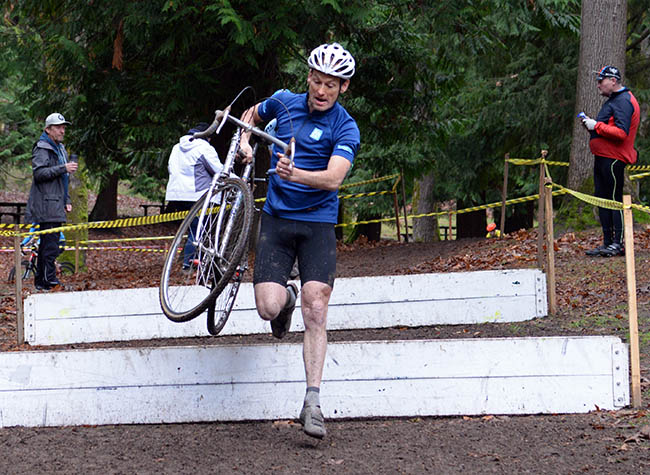Which Hand for which Brake?
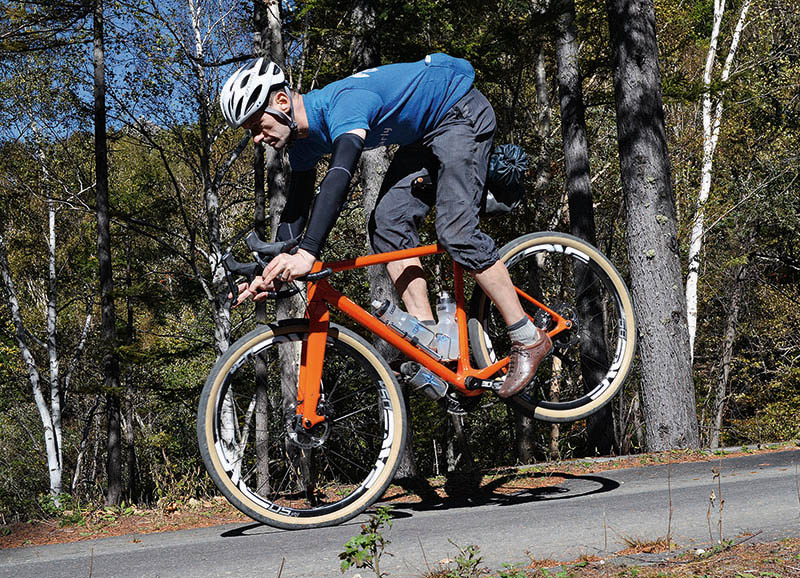
One of the most confounding questions in cycling is this: Which hand should control which brake? In the U.S., the law requires that bikes are sold with the left hand controlling the front brake, and the right hand the rear brake. It’s the same in France. In Italy and Great Britain, it’s the other way around: The right hand controls the front brake.
Many myths surround the reasons for these differences, but history is the most likely explanation: Early bikes had only a rear brake. In France, this was usually a rim brake. The early brakes were not very powerful, so you needed lots of hand power to stop the bike. Most people are right-handed, and it made sense to control the single brake with the right hand. So the single brake lever was mounted on the right, and it controlled the rear brake. In Italy and Britain, the single brake was a coaster brake, which you activate by backpedaling. Those bike had no brake lever at all.
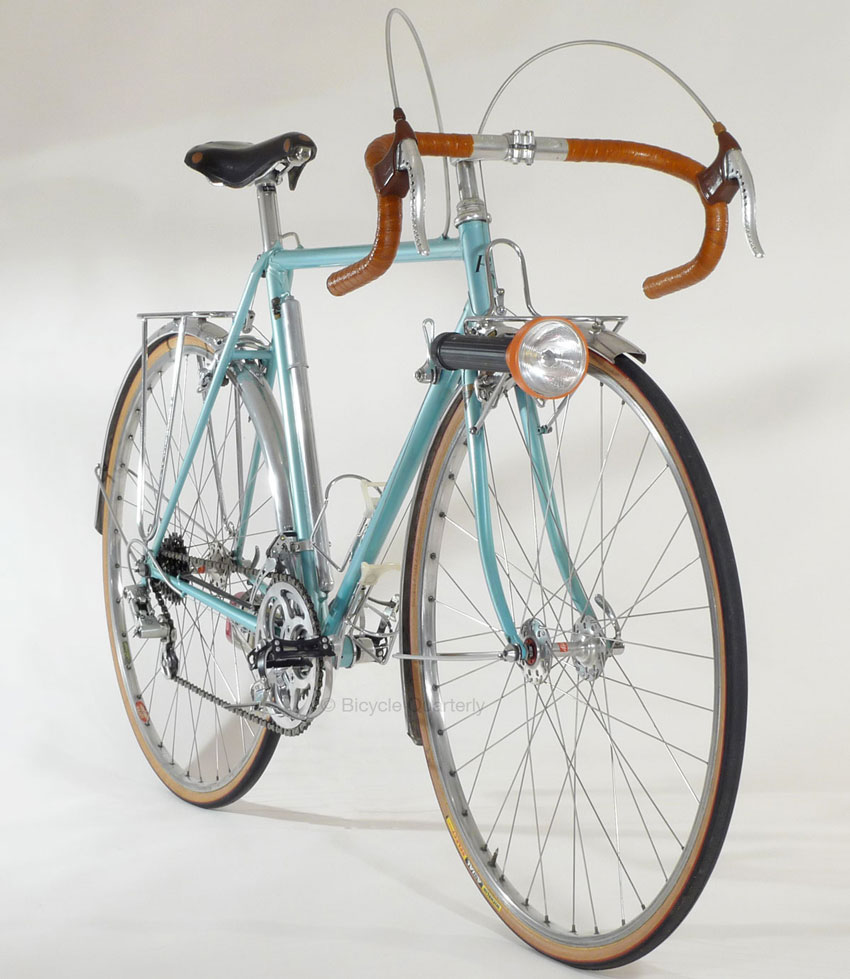
For this post, we’re using photos of classic bikes with exposed brake cables, because you can easily see which brake connects to which lever. (With modern brakes, the cables are hidden under the handlebar tape.)
Front brakes were added to bikes in the middle of the 20th century—most countries adopted laws requiring two brakes around this time. This required adding a brake lever to the handlebars. In France, the right side was already taken, so the extra lever for the front brake was mounted on the left (above).
The U.S. copied French practice – probably because Schwinn was the only company importing performance bikes with hand brakes, and Schwinn was influenced by French bicycles and used French components.
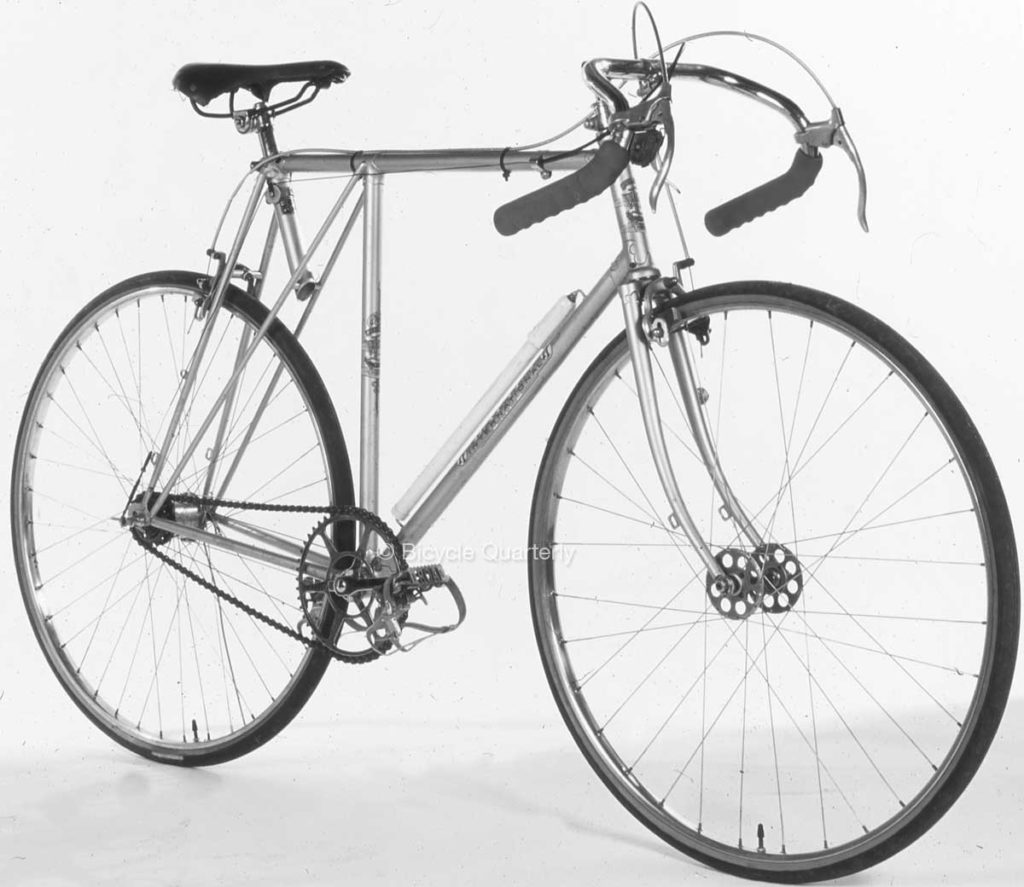
In ‘coaster-brake countries’ (Britain, Italy, Germany, etc.), the handlebars were still empty, so the brake lever for the front brake went on the right side (above). When racers started using rim brakes on both wheels, the extra brake lever (for the rear wheel) went on the left side.
Look carefully at the Baines ‘Flying Gate’ above, and you can see how British sidepull brakes have the cable enter on the left side (seen from the rider’s perspective). This ensures a larger radius for the brake cable coming from the right lever.
Those are the historic reasons why some countries use ‘right – front‘ and others ‘left – front.
What it doesn’t answer is the question: Which is better?
Many reasons have been put forward for the ‘right hand – front brake’ approach. Most motorcycles use that configuration, since the right hand operates the throttle and the left hand the clutch (via a hand lever)—since you need to use both at the same time when shifting gears with a manual transmission. With the clutch lever on the left, the right side of the handlebars is the only place to put a brake lever. (The rear brake on motorcycles is usually operated with a foot lever.)
Some cyclocross racers prefer the ‘right – front’ setup, so they can brake on the rear with their left hand while they dismount. I am not so sure this makes sense. Braking on the rear when it’s muddy will get the bike fishtailing, which isn’t a good idea when you’re already half-way off the bike. You really should be done with all your braking by the time you take your hand off the bars and prepare to shoulder the bike. (European cyclocross professionals generally seem to follow their country’s practice, with Belgian and French racers using the ‘left – front’ setup.)
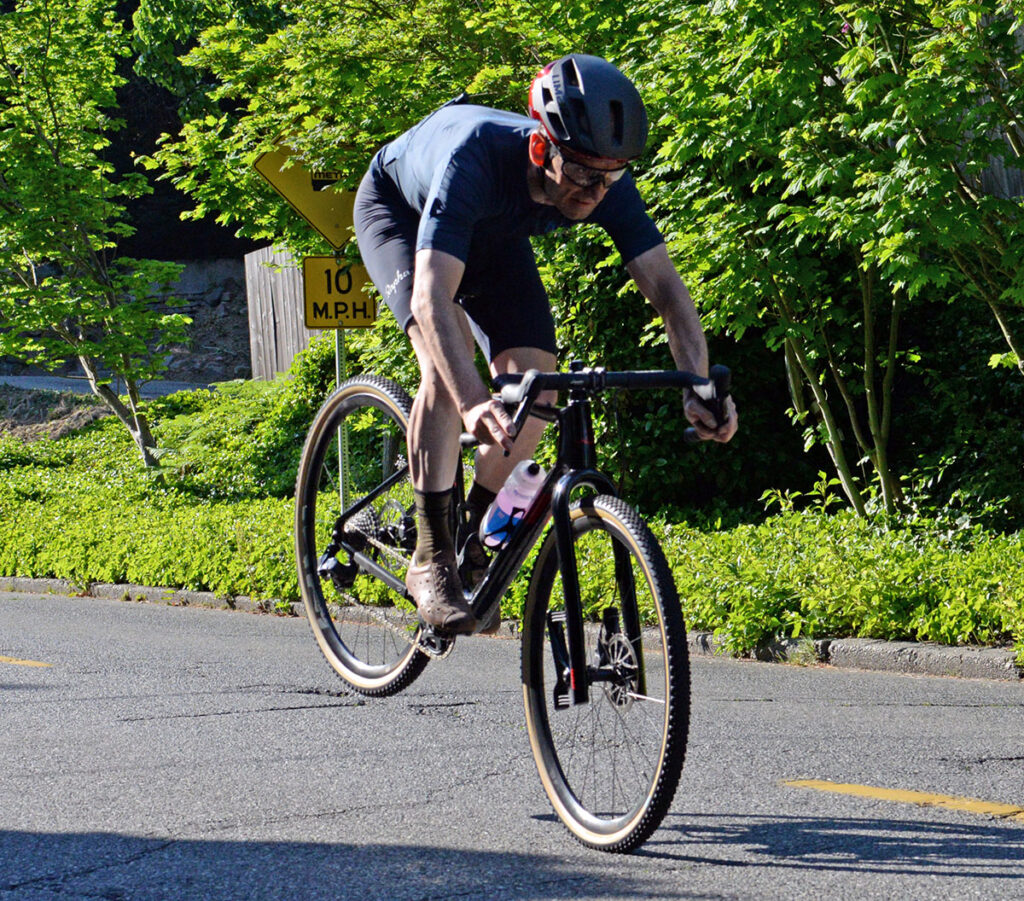
Some point to the fact that most riders are right-handed, and the front brake is the most useful one—because of the forward weight transfer as the bike slows. When your rear wheel is barely touching the ground—or not at all—there isn’t much use in braking on the rear. Using your stronger hand to operate the more important brake seems to make sense. Except that a good brake shouldn’t require huge amounts of hand power…
Are there advantages of the ‘left – front’ way of setting up your brakes? One advantage in the U.S., where we ride on the right side of the road, is that you can come to a stop and hold on to a railing or post with your right hand, while your left hand still operates the front brake. Being right-handed, I often use my right hand to shift, eat or take photos, so it’s nice to have my free hand ready to brake with the more important brake.
There are pros and cons for each setup, but none are so persuasive that they make one setup better than the other. It really comes down to personal preference.
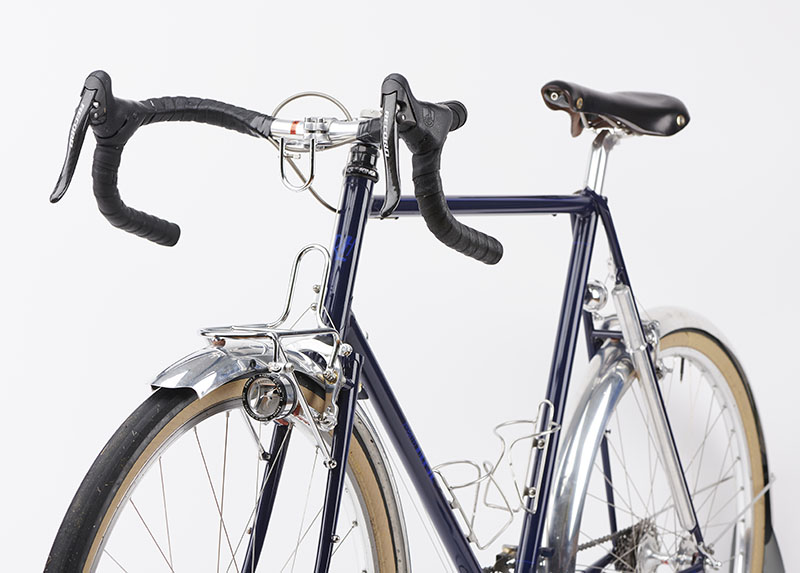
On bikes with centerpull or cantilever brakes, it’s easy to switch the brake cables from one side to another.
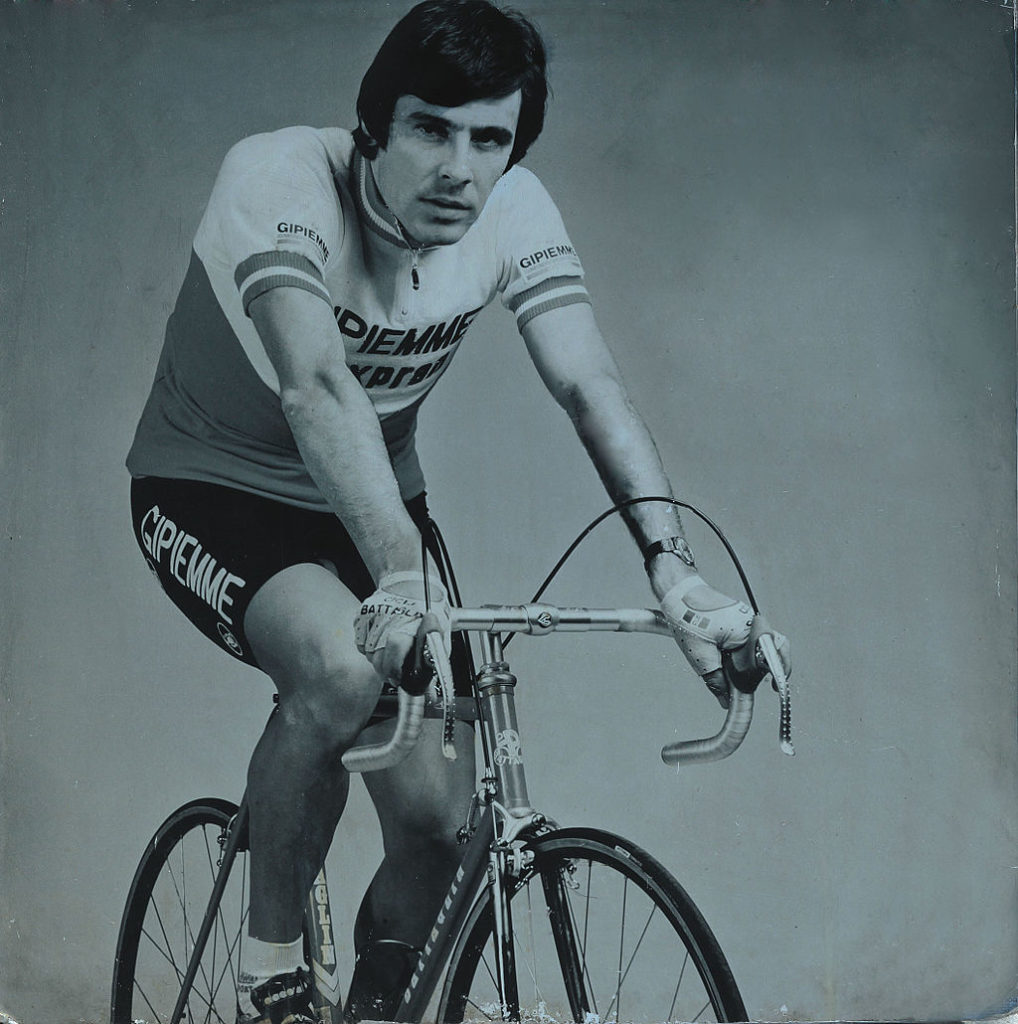
Most sidepull brakes are set up for ‘left hand – front brake,’ even those made by Italian companies like Campagnolo and Gipiemme… yet most Italian racers route the cables the opposite way (above). The bend of the front brake cable is a little tighter (especially with aero brake levers), but it’s not a big deal.
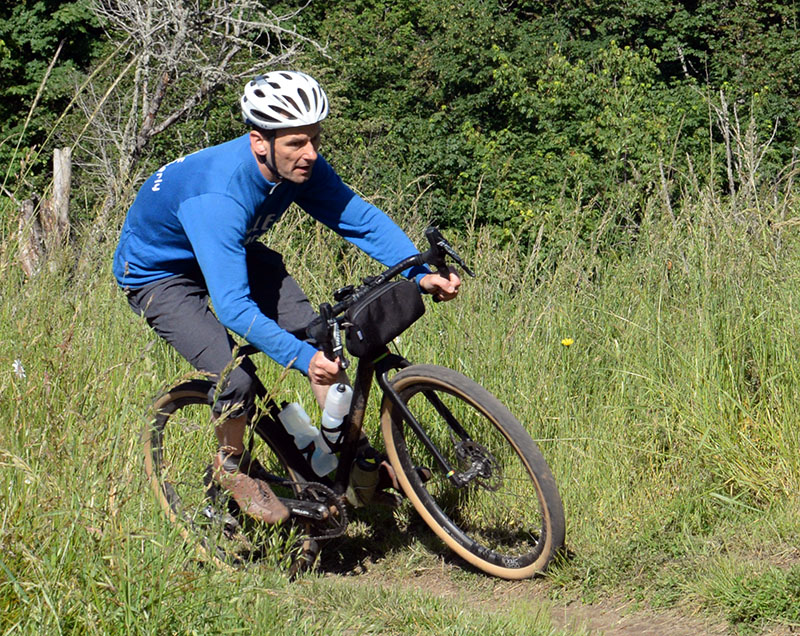
With disc brakes, the rotor is on the left side: If you use the right lever to operate the front brake, then the cable run has a larger radius, which may be helpful with mechanical discs. (Cables have more friction when routed in tight bends. Hydraulic fluid works via pressure, so it’s unaffected by tight bends.)
Whatever you do, I recommend being consistent. During a panic stop, your instincts will take over. If your brakes are reversed from you’re used to, you’ll skid the rear wheel without slowing down much if you usually brake on the front (for maximum braking power), or you may lose control and fly forward if you usually brake on the rear (and aren’t used to bracing yourself for the powerful braking of the front brake). Several of my friends use the ‘right – front’ approach, and when I ride their bikes, I constantly have to remind myself of the reversed brake levers – and hope that I won’t have to stop in a hurry.
Further Reading:
- How to brake on a bicycle for maximum stopping power.
- For more information about how bikes really work, check out our book The All-Road Bike Revolution — How to Make Your Bike Fast, Comfortable and Reliable.
Photo credits: Hilary Stone (Baines Flying Gate), Nicolas Joly (dark blue Rene Herse), Gipiemme (Giovanni Battaglin), Ryan Francesconi (OPEN gravel bike).


